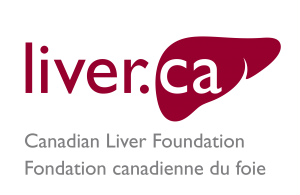Health Professionals

Liver disease may be silent, but it is on the rise.
1 in 4 Canadians – men, women and children – may be affected by liver disease. As a healthcare professional, you want access to reliable information and resources to help you and your patients. The Canadian Liver Foundation partners with professional associations like the Canadian Association for the Study of the Liver (CASL), academic and research institutions, hospitals, government agencies and others to assist in the provision of evidence-based information and practical tools and resources to help you improve liver health in your community through prevention, diagnosis, treatment and care.
Note: The information links on this page have been chosen based on their content, source and potential usefulness for our site visitors and are provided here as a public service with regard to liver-related issues. However, the Canadian Liver Foundation assumes no responsibility for any information on these sites and the inclusion of a link on this page does not constitute an endorsement of any sponsoring organization or individual by the Canadian Liver Foundation.
Risk Factors
Liver disease can often be difficult to diagnose because its symptoms can be vague and easily confused with other health problems. In some cases, a person may have no symptoms at all and yet the liver may already have suffered significant damage. Risk factors can vary significantly across the 100+ forms of liver disease, so there is not one single “profile” of a patient who may have liver disease – it can affect anyone, at any age, of any socio-economic status and of any ethnic background.
It is important for healthcare professionals to be aware of some of the more common risk factors and symptoms for liver disease so you can proactively look for these warning signs and take the necessary steps (i.e.: learn more, order the appropriate tests, consult with a specialist) because early diagnosis of liver disease gives you and your patient the best chance at effectively addressing the liver disease.
Some of the more common and identifiable risk factors for liver disease may include:
- Obesity / Diabetes (i.e.: metabolic syndrome)
- Exposure to certain chemicals or toxins including prescription and over-the-counter medications, herbal medications and recreational “street drugs” (i.e.: acetaminophen overdose, mixing medication with alcohol)
- Heavy alcohol consumption
- Family history of liver disease
- Exposure to hepatitis B or C virus in blood or bodily fluids:
- Blood, blood products or an organ donation or transplant prior to 1990 in Canada
- Injection or intranasal drug use or shared drug paraphernalia
- Born in other parts of the world where hepatitis B and hepatitis C are more common (i.e.: Central, East and South Asia; Australasia and Oceania; Eastern Europe; Sub-Saharan Africa; and North Africa/Middle East)
- Improperly sterilized equipment (dental procedures, kidney/hemodialysis treatment, tattoos & body piercings, etc.)
- Unprotected sexual intercourse
Some of the more common and identifiable symptoms of decompensated liver disease include:
- Jaundice (yellowing of the skin and eyes due to elevated bilirubin in the blood)
- Nausea, vomiting or loss of appetite
- Abdominal swelling (ascites) or tenderness in the area of the liver
- Chronic fatigue
- Itchy skin (pruritus)
- Dark colour urine
- Pale or bloody stool
- Dementia-like confusion (hepatic encephalopathy)
The information links on this page have been chosen based on their content, source and potential usefulness for our site visitors and are provided here as a public service with regard to liver-related issues. However, the Canadian Liver Foundation assumes no responsibility for any information on these sites and the inclusion of a link on this page does not constitute an endorsement of any sponsoring organization or individual by the Canadian Liver Foundation.
Diagnostics
Diagnosis and management of liver disease begins with gathering information during your patient consultation, including patient/family history, physical examination and the administration of liver tests. This combination of information will help to guide your decisions on how to effectively recognize, respond and resolve liver health issues with your patients.
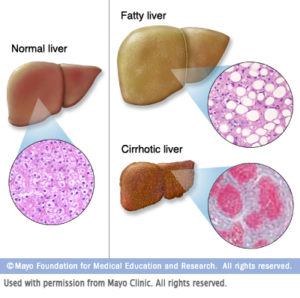 The Canadian Liver Foundation encourages all Primary Healthcare Providers to engage in frank discussions with their patients regarding possible risk factors for liver disease, including topics such as drug use (past or current), alcohol consumption, sexual activity, diet and exercise and medication management (prescription, over-the-counter and complementary/alternative).
The Canadian Liver Foundation encourages all Primary Healthcare Providers to engage in frank discussions with their patients regarding possible risk factors for liver disease, including topics such as drug use (past or current), alcohol consumption, sexual activity, diet and exercise and medication management (prescription, over-the-counter and complementary/alternative).
The CLF also recommends that all Primary Healthcare Providers incorporate liver function tests as part of the routine blood panel ordered during regular physical check-ups with your patients. These preliminary liver function tests will help to identify whether additional investigation needs to be undertaken:
Alanine aminotransferase (ALT) and Aspartate aminotransferase (AST)
The ALT and AST tests measure the amount of these enzymes in the blood. ALT and AST are found mainly in liver cells but if the liver cells are damaged, these enzymes can leak out of the liver cells and make their way into the bloodstream. Most increases in ALT and AST levels can be an indicator of liver damage but do not reflect the liver’s actual functional ability.
Alkaline phosphatase (ALP)
The ALP test measures the amount of this enzyme in the blood. ALP is produced mostly in the liver and is used most frequently to detect obstruction in the biliary system. Elevation of this enzyme may be found in a large number of liver disorders including gallstone disease, alcohol abuse, drug-induced hepatitis and primary biliary cholangitis. Increased levels of ALP can be an indicator of possible liver or bile duct damage.
Total Bilirubin, International Normalized Ratio (INR) and Serum Albumin
These are surrogate markers of liver function and when there is significant decompensation, these lab tests will be abnormal. The degree of abnormality reflects the liver’s residual functional ability. All three laboratory markers are components of the Child-Pugh Score which is a global score of liver decompensation. The INR and bilirubin, along with the serum creatinine (a marker of kidney function that is abnormal in serious liver dysfunction) are also components in the MELD Score (Model for End-Stage Liver Disease). The MELD score is the only approved score in the United States for liver transplant waiting list assignment and triage. The MELD score, with the Child-Pugh Score, is also used by all Canadian liver transplant centres.
Additional Diagnostics Tools & Calculators
iMD Health Canada
Purpose: Award-winning interactive touch-screen computer terminal that helps doctors communicate liver disease information more effectively to patients and their caregivers at the point of care. This system is loaded with information for both doctors and their patients including: images, understanding, lifestyle, prescription and over-the-counter medications, consumer care and professional tools.
Find more information here.
(Please note: this is an external site, information available is in English)
LiverTox
Purpose: Up-to-date, accurate, and easily accessed information on the diagnosis, cause, frequency, patterns, and management of liver injury attributable to prescription and non-prescription medications, herbals and dietary supplements.
Information and search database
(Please note: this is an external site, information available is in English)
Model for End-Stage Liver Disease Score (MELD Score)
Purpose: To assess the severity of liver disease and to determine prognosis and prioritize for receipt of a liver transplant.
Information and calculator
(Please note: this is an external site, information available is in English)
Pediatric End-Stage Liver Disease Score (PELD Score)
Purpose: To assess the severity of liver disease for children under 12 years of age and to determine prognosis and prioritize for receipt of a liver transplant.
Information and calculator
(Please note: this is an external site, information available is in English)
Child-Pugh Score
Purpose: To assess the severity of cirrhosis.
Information and calculator
(Please note: this is an external site, information available is in English)
Maddrey’s Discriminant Function for Alcoholic Hepatitis
Purpose: To predict prognosis in alcohol-related hepatitis and identify patients for treatment with steroids.
Information and calculator
(Please note: this is an external site, information available is in English)
Clinical Hepatic Encephalopathy Staging Scale (CHESS)
By Dr. Christopher Rose (CRCHUM, University of Montreal) and Dr. Philip Wong (McGill University Health Centre), June 2016
Introductory letter available here (Available here in French). Scale sheet available here (Available here in French)
Hepatic Encephalopathy Symptom Tracker and Monitoring Tool (for Patients & Caregivers)
By Dr. Christopher Rose (CRCHUM, University of Montreal) and Dr. Philip Wong (McGill University Health Centre), June 2016
Download the symptom tracker here (Available here in French).
Reach-B Score
Purpose: To predict liver cancer risk in patients with chronic hepatitis B.
Find more information here.
(Please note: this is an external site, information available is in English)
The information links on this page have been chosen based on their content, source and potential usefulness for our site visitors and are provided here as a public service with regard to liver-related issues. However, the Canadian Liver Foundation assumes no responsibility for any information on these sites and the inclusion of a link on this page does not constitute an endorsement of any sponsoring organization or individual by the Canadian Liver Foundation.
Clinical Practice Guidelines
The following evidence-based clinical practice guidelines have been developed by experts and include recommendations of preferred approaches to the diagnostic, therapeutic, and preventative aspects of care. The information links provided below have been reviewed by the Canadian Liver Foundation Medical Advisory Committee for relevance and scientific merit and have been posted with permission from the source.
Choosing Wisely Canada is a program to help clinicians and patients engage in conversations about unnecessary tests and treatments, and make smart and effective care choices.
Five Things Physicians and Patients Should Question
July 2017
(Available in french here)
The Diagnosis and Management of Nonalcoholic Fatty Liver Disease:
Practice Guidance From the American Association for the Study of Liver Diseases
Practice Guideline by the American Association for the Study of Liver Diseases, American College of Gastroenterology, and the American Gastroenterological Association
Journal of Hepatology, Vol. 67, No. 1, January 2018
NASPGHAN Clinical Practice Guideline for the Diagnosis and Treatment of Nonalcoholic Fatty Liver Disease in Children:
Recommendations from the Expert Committee on NAFLD (ECON) and the North American Society of Pediatric Gastroenterology, Hepatology and Nutrition (NASPGHAN)
Journal of Pediatric Gastroenterology and Nutrition, February 2017
(Please note: these are external resources, information available is in English)
Diagnosis and Management of Hemochromatosis
2011 Practice Guideline by the American Association for the Study of Liver Diseases
Journal of Hepatology, Vol. 54, No. 1, 2011
How I Treat Hemochromatosis
Journal Blood, Vol. 116, No. 3, July 2010 (public access)
(Please note: these are external resources, information available is in English)
Hepatic Encephalopathy in Chronic Liver Disease
2014 Practice Guideline by the American Association for the Study of Liver Diseases and the European Association for the Study of the Liver
Journal of Hepatology, Vol. 60, Issue 2, Pages 715-735, August 2014
Clinical Hepatic Encephalopathy Staging Scale (CHESS)
By Dr. Christopher Rose (CRCHUM, University of Montreal) and Dr. Philip Wong (McGill University Health Centre), June 2016
Introductory letter available here.
(Available in French here and here)
Hepatic Encephalopathy Symptom Tracker and Monitoring Tool (for Patients & Caregivers)
By Dr. Christopher Rose (CRCHUM, University of Montreal) and Dr. Philip Wong (McGill University Health Centre), June 2016
(Available in French here)
Caring for the Child with Chronic Hepatitis B Infection
By Constance O’Connor, MN and Simon Ling, MBChB
The Hospital for Sick Children, Toronto, Ontario, Canada, June 2014
Primary Care Management of Hepatitis B – Quick Reference
Public Health Agency of Canada, March 2013
Pour la version française, cliquez ici.
Management of Chronic Hepatitis B:
Consensus guidelines from the Canadian Association for the Study of the Liver
Canadian Journal of Gastroenterology and Hepatology, December 2012
Management of Chronic Hepatitis B:
Canadian Association for the Study of the Liver Consensus Guidelines
Canadian Journal of Gastroenterology and Hepatology, June 2007
(Please note: these are external resources, information available is in English)
Blueprint to inform hepatitis C elimination efforts in Canada
The Canadian Network on Hepatitis C Blueprint Writing Committee and Working Groups
May 2019
The management of chronic hepatitis C: 2018 guideline update from the Canadian Association for the Study of the Liver
Consensus Guidelines from the Canadian Association for the Study of the Liver
CMAJ, June 4, 2018, Volume 190, Issue 22
Hepatitis C Screening & Testing Quick Reference Guide
Canadian Liver Foundation (June 2018)
Click here to download infographic or here for the brochure version. Pour la version en français, cliquez ici ou ici pour télécharger.
CIHR Canadian HIV Trials Network Coinfection and Concurrent Diseases Core Research Group:
2016 Updated Canadian HIV/Hepatitis C Adult Guidelines for Management and Treatment.
Mark Hull, Stephen Shafran, Alex Wong, et al. Canadian Journal of Infectious Diseases and Medical Microbiology, vol. 2016, Article ID 4385643, 34 pages, 2016
CIHR Canadian HIV Trials Network Coinfection and Concurrent Diseases Core: Canadian guidelines for management and treatment of HIV/hepatitis C coinfection in adults
Canadian Journal of Infectious Diseases & Medical Microbiology, October 2014
(Please note: these are external resources, information available is in English)
Hepatocellular Carcinoma:
Consensus, controversies and future directions: A report from the Canadian Association for the Study of the Liver Hepatocellular Carcinoma Meeting
Canadian Journal of Gastroenterology and Hepatology, Vol. 29, No. 4, May 2015
Focal Tumour Ablation in Ontario: Recommendations Report 2015
Focal Tumour Ablation Advisory Committee, Cancer Care Ontario / Action Cancer Ontario
Multidisciplinary Canadian Consensus Recommendations for the Management and Treatment of Hepatocellular Carcinoma
Journal of Current Oncology, Vol. 18, No. 5, 2011
(Please note: these are external resources, information available is in English)
Hepatology 2017: A Clinical Textbook
By Mauss, Berg, Rockstroh, Sarrazin, Wedemeyer.
To download free PDF or to buy a copy of the book, click here.
(Please note: these are external resources, information available is in English)
Guidance on the Use of Increased Infectious Risk Donors for Organ Transplantation:
The CST/CNTRP Increased Risk Donor Working Group
Journal Transplantation, September 2014
Evaluation of the Pediatric Patient for Liver Transplantation:
2014 Practice Guideline by the American Association for the Study of Liver Diseases, American Society of Transplantation and the North American Society for Pediatric Gastroenterology, Hepatology and Nutrition
Journal of Hepatology, Vol. 60, Issue 1, Pages 362-398, July 2014
(Please note: these are external resources, information available is in English)
EASL Clinical Practice Guidelines: The diagnosis and management of patients with primary biliary cholangitis
2017 Clinical Practice Guidelines by the European Association for the Study of the Liver (EASL)
Journal of Hepatology, Vol, 67, No. 145-172, 2017
Patient Guide for Primary Biliary Cholangitis (PBC): Living with your diagnosis
2017 Patient Guide by The PBC Network, endorsed and reviewed by the European Association for the Study of the Liver (EASL)
AASLD Practice Guidelines: Primary Biliary Cirrhosis
2018 Practice Guideline by the American Association for the Study of Liver Diseases
Journal of Hepatology, Vol. 0, No. 0, 2018
(Please note: these are external resources, information available is in English)
The information links on this page have been chosen based on their content, source and potential usefulness for our site visitors and are provided here as a public service with regard to liver-related issues. However, the Canadian Liver Foundation assumes no responsibility for any information on these sites and the inclusion of a link on this page does not constitute an endorsement of any sponsoring organization or individual by the Canadian Liver Foundation.
Resources for You and Your Patients
The following tools and resources are available to further assist you in accessing information regarding prevention, diagnosis, treatment and care of various forms of liver disease.
If you would like general information about various forms of liver disease, or if you would like to offer your patients and their caregivers an opportunity to learn more about liver disease symptoms, treatments, tests, transplant and patient support programs, please visit our Patients & Caregivers section.
Additional professional education resources are offered below to help you effectively recognize, respond and resolve liver health issues in your practice. The information links provided have been reviewed by the Canadian Liver Foundation Medical Advisory Committee for relevance and scientific merit and have been posted with permission from the source:
Biliary Atresia
“The Canadian Biliary Atresia Registry (CBAR) is a collaboration between the Canadian Pediatric Hepatology Research Group (CPHRG) and the Canadian Association of Pediatric Surgeons (CAPS), the two well-established networks in Canada involved with the care of children with biliary atresia.”
To access more information for Physicians and Investigators, click here.
Hepatitis B
International Hepatitis B Cure Workshop 2017
This one-day workshop brought together global inter-disciplinary experts to enhance the field of hepatitis B research and to provide an interactive platform to achieve the goal of global hepatitis B cure. The meeting included invited lectures, oral abstract presentations, poster viewing sessions, Q&A sessions, round table discussions and debates.
The slides and videos are now available online. Click here.
International Hepatitis B Cure Workshop 2016
This one-day workshop brought together global inter-disciplinary experts to enhance the field of hepatitis B research and to provide an interactive platform to achieve the goal of global hepatitis B cure. The meeting included invited lectures, oral abstract presentations, poster view sessions, Q&A sessions, round table discussions and debates.
The slides and videos are now available online. Click here.
International Viral Hepatitis Elimination Meeting 2017
The objective of this meeting is to enhance elimination of viral hepatitis worldwide from the perspective of the medical community. This meeting will address obstacles on the elimination of viral hepatitis along with strategies for success. Following the framework of the recent World Health Organization goals, the meeting will provide an ideal forum for presenting plans to address the elimination of Hepatitis B and C, with concrete objectives, tangible goals and measurable outcomes. The outcomes will be translated to an updated version of the Toronto Declaration.
The slide and videos are now available online. Click here.
International Viral Hepatitis Elimination Meeting 2016
The objective of this meeting is to enhance elimination of viral hepatitis worldwide from the perspective of the medical community. This meeting will address obstacles on the elimination of viral hepatitis along with strategies for success. Following the framework of the recent World Health Organization goals, the meeting will provide an ideal forum for presenting plans to address the elimination of Hepatitis B and C, with concrete objectives, tangible goals and measurable outcomes. The outcomes will be translated to an updated version of the Toronto Declaration.
The slide and videos are now available online. Click here.
Hepatitis C
Hepatitis C Education National Needs Assessment
Canadian Liver Foundation and Canadian Association for the Study of the Liver, in partnership with the Canadian Association of Hepatology Nurses
(October 2015)
Assessment of the current knowledge of healthcare providers in the area of hepatitis C management, including screening and treatment using new antivirals, as well as the educational needs of healthcare providers at a national level.
Download the Hepatitis C Education National Needs Assessment here.

7th Canadian Symposium on the Hepatitis C Virus (HCV) 2018
Toward Elimination of HCV: How to Get There. The videos are now available online. Click here.
6th Canadian Symposium on Hepatitis C Virus 2017
Delivering a Cure for Hepatitis C Infection: What are the Remaining Gaps? The videos are now available online. Click here.
5th Canadian Symposium on Hepatitis C Virus 2016
We’re Not Done Yet – Remaining Challenges in Hepatitis C. The videos are now available online. Click here.
3rd Optimize Workshop: Using DAAS in Patients with Cirrhosis and Liver Recipients
This workshop focuses on current and emerging direct-acting individuals (DAAs) which promises to impact greatly the management of hepatitis C both prior to and after transplantation. Patients with cirrhosis, patients waiting on lists for liver transplantation, and liver recipients represent populations with a significant need for effective new therapies. The slides and videos are now available online. Click here.
International Viral Hepatitis Elimination Meeting 2017
The objective of this meeting is to enhance elimination of viral hepatitis worldwide from the perspective of the medical community. This meeting will address obstacles on the elimination of viral hepatitis along with strategies for success. Following the framework of the recent World Health Organization goals, the meeting will provide an ideal forum for presenting plans to address the elimination of Hepatitis B and C, with concrete objectives, tangible goals and measurable outcomes. The outcomes will be translated to an updated version of the Toronto Declaration.
The slide and videos are now available online. Click here.
International Viral Hepatitis Elimination Meeting 2016
The objective of this meeting is to enhance elimination of viral hepatitis worldwide from the perspective of the medical community. This meeting will address obstacles on the elimination of viral hepatitis along with strategies for success. Following the framework of the recent World Health Organization goals, the meeting will provide an ideal forum for presenting plans to address the elimination of Hepatitis B and C, with concrete objectives, tangible goals and measurable outcomes. The outcomes will be translated to an updated version of the Toronto Declaration.
The slide and videos are now available online. Click here.
Hepatic Encephalopathy
Hepatic Encephalopathy: Explore the Neuropsychiatric Consequences of Cirrhosis
Prepared by: Dr. Christopher Rose, Dr. Hermant Shah, Dr. Puneeta Tandon and Dr. Philip Wong (June 2017)

Click on the above image and save the Powerpoint Show to view the slides.
Module 1:
Chronic Liver Disease & Cirrhosis: An Introduction
Hepatic Encephalopathy: Overview
Hepatic Encephalopathy: Pathophysiology
Hepatic Encephalopathy: Clinical Classification
Covert Hepatic Encephalopathy: West Haven/Conn Score (0-1)
Covert Hepatic Encephalopathy: Testing


Click on the above image and save the Powerpoint Show to view the slides.
Module 2:
Overt HE
Nonabsorbable Disaccharides: Lactulose
Dietary Modification: BCAA’s(Branched-Chain Amino Acids) Nutrition in cirrhosis
For a video version of the slides with voice-over narration, please click here.
Hepatocellular Carcinoma (Liver Cancer)
Canadian Association for the Study of the Liver Hepatocellular Carcinoma Meeting: Consensus, Controversies and Future Directions
The slides and videos are now available online. Click here.
Liver Disease
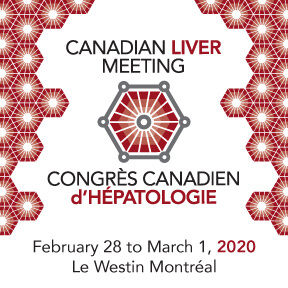
This meeting is a collaborative effort of the Canadian Association for the Study of the Liver (CASL), the Canadian Network on Hepatitis C (CANHEPC) and the Canadian Association of Hepatology Nurses (CAHN).
This is a unique opportunity to exchange ideas, promote collaboration and foster knowledge translation among Canadian researchers, healthcare practitioners and community-based groups with interest in Hepatology. The Canadian Liver Meeting Conference Abstracts 2020 available here.
Liver Disease in Canada: A Crisis in the Making
(April 2013)
Canadian Liver Foundation sounds the alarm on looming public health crisis
The Canadian Liver Foundation released “Liver Disease in Canada: A Crisis in the Making” – the first comprehensive report on liver disease in Canada. Findings include close to a 30 per cent increase in deaths from liver disease in the eight years from 2000-2007, with Ontario, Quebec, Alberta and British Columbia being hit hardest.
Click here to download.
Lysosomal Acid Lipase Deficiency (LALD)
Webinar : The Role of Pathology in Diagnosing Lysomal Acid Lipase Deficiency (LAL-D)
Presented by: Dr. Subrata Chakrabarti, Chair, Department of Pathology and Laboratory Medicine at Western University and Chief of Pathology and Laboratory Medicine at London Health Sciences Centre & St. Joseph’s Health Care, London, Ontario, Canada.
Lysosomal Acid Lipase Deficiency (LAL-D) is an autosomal recessive lysosomal storage disorder [previously known as Wolman Disease (infants) and Cholesteryl Ester Storage Disease (children and adults)]. In pediatric and adult patients, nearly 50% progress to fibrosis, cirrhosis or liver transplant within 3 years of onset of symptoms.
For Healthcare Professionals: To request access to the webinar video, please click here to fill out the request form.
To access the Canadian Liver Foundation’s Hep C Resource Centre for Healthcare Professionals, click here.
To access the HE Resource Centre for Healthcare Professionals, click here.
Hepatopulmonary Syndrome (HPS) is a condition that affects the lungs of people diagnosed with chronic liver disease. In the lungs, capillaries (small blood vessels that can be found throughout the body) play a crucial role in the oxygenation of the blood. When the liver is severely damaged, the capillaries in the lungs become dilated, affecting the absorption of oxygen by the red blood cells. As a result of the dilated capillaries, the lungs are not able to provide the body with adequate amounts of oxygen, resulting in a condition known as hypoxemia. Most common symptoms of HPS include shortness of breath and difficulty breathing that is relieved when lying down. A common treatment option for HPS is supplemental oxygen. The ultimate cure for HPS is a liver transplant.
For more information on Hepatopulmonary Syndrome (HPS) please visit http://hpscare.com/for-practitioners/
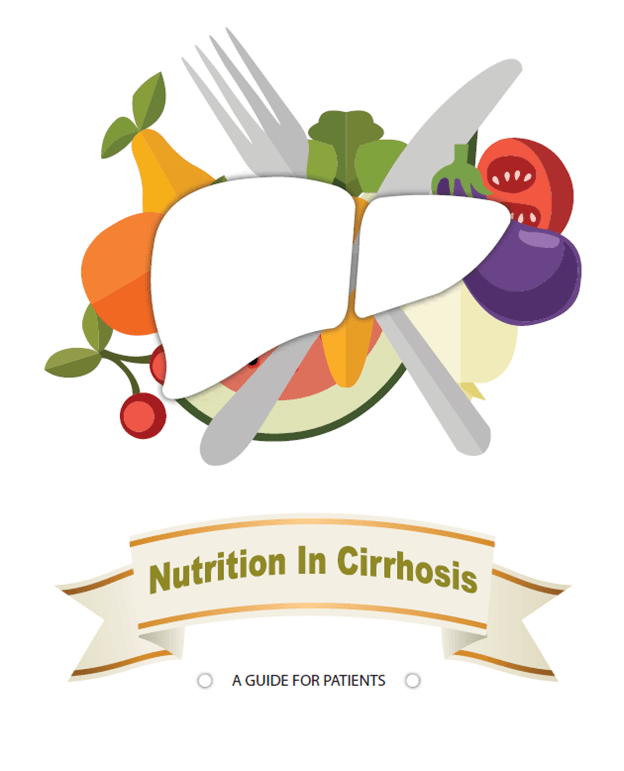 The Nutrition in Cirrhosis Guide
The Nutrition in Cirrhosis Guide
This Guide covers general topics relevant to all patients with cirrhosis. Specific nutrition issues are also addressed that may be helpful at other times. The Guide is a tool for use throughout your cirrhosis journey. It also includes recipes that are suitable for all individuals and can be modified to accommodate food allergies, dietary restrictions, and preferences.
Click here to download a copy. To order a hard copy version, send your request to Publication Orders.
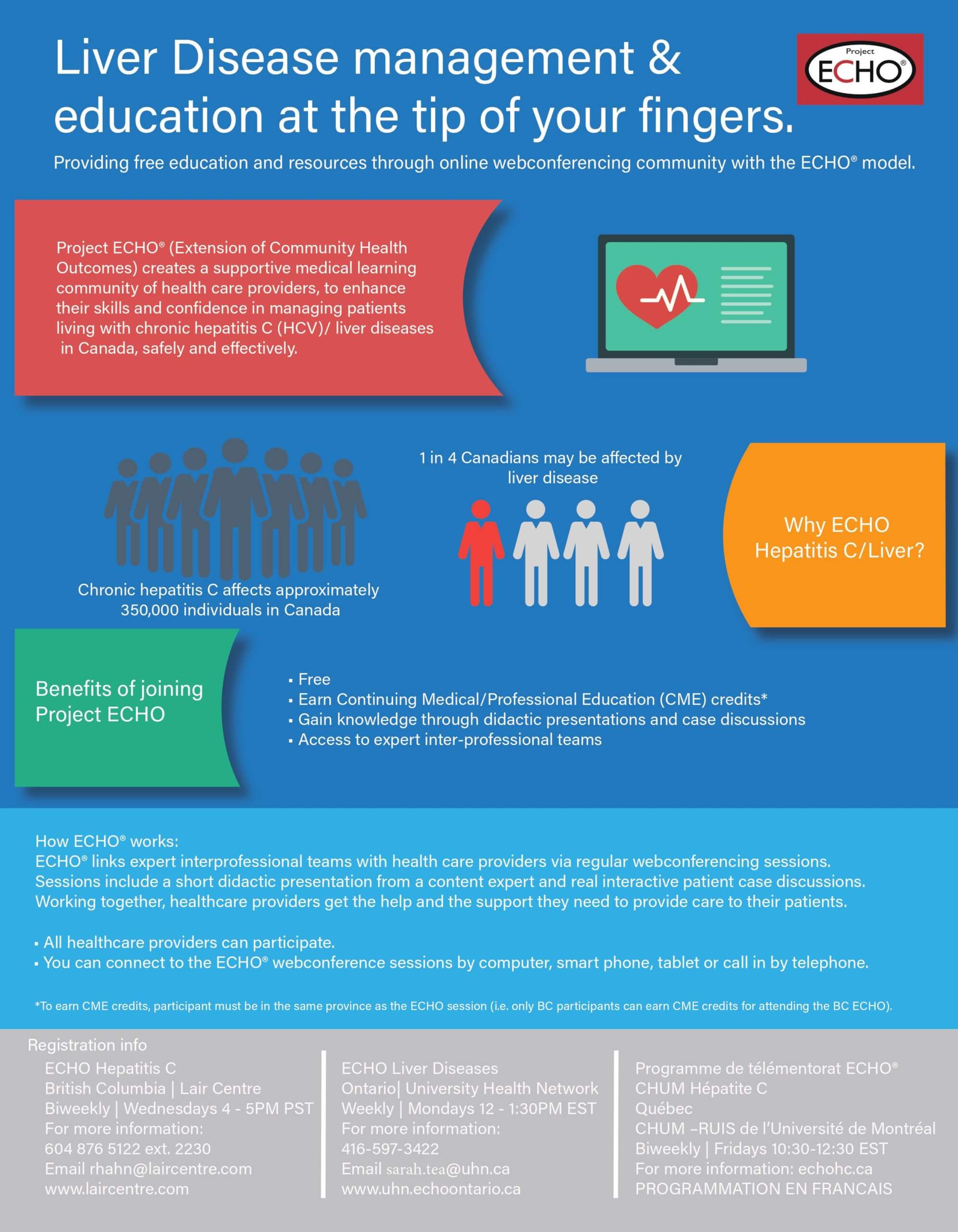 Project ECHO® (Extension of Community Health Outcomes) creates a supportive medical learning community of health care providers, to enhance their skills and confidence in managing patients living with chronic hepatitis C and liver diseases in Canada. This program is available in British Columbia, Ontario & Québec (in French). The sessions are CME accredited for physicians and may provide continuing professional development hours for other health care professionals.
Project ECHO® (Extension of Community Health Outcomes) creates a supportive medical learning community of health care providers, to enhance their skills and confidence in managing patients living with chronic hepatitis C and liver diseases in Canada. This program is available in British Columbia, Ontario & Québec (in French). The sessions are CME accredited for physicians and may provide continuing professional development hours for other health care professionals.
For more information on this program, please click here to view the Project ECHO information sheet.
Upcoming 2022 sessions:
The information links on this page have been chosen based on their content, source and potential usefulness for our site visitors and are provided here as a public service with regard to liver-related issues. However, the Canadian Liver Foundation assumes no responsibility for any information on these sites and the inclusion of a link on this page does not constitute an endorsement of any sponsoring organization or individual by the Canadian Liver Foundation.
Biliary Atresia Treating Physicians in Canada
“The Canadian Biliary Atresia Registry (CBAR) is a collaboration between the Canadian Pediatric Hepatology Research Group (CPHRG) and the Canadian Association of Pediatric Surgeons (CAPS), the two well-established networks in Canada involved with the care of children with biliary atresia.”
To access the Canadian Biliary Atresia Registry and Investigators, click here.
Hepatitis C Treating Physicians in Canada
Looking for physicians in your area who treat hepatitis C? The physicians in the searchable maps below have indicated that they treat hepatitis C. Please contact them to ask about patient referrals.
Search Tips:
• Click on the view larger map button located on the right side of the menu bar.
• Search by city, province, postal code, hospital, physician name, etc.
• Physician database will be updated as new information is received. Please check updated database for each new referral.
* If you would like the CLF to add, revise or remove your name from this database, please contact Karen Seto by email or phone at 1 (800) 563-5483 (Extension 4939).
Note: The information provided in these directories has been provided by the physicians and have been posted with their permission. The Canadian Liver Foundation assumes no responsibility for any information or services provided by these physicians and the inclusion of their names on these directories does not constitute an endorsement of any sponsoring organization or individual by the Canadian Liver Foundation.
Meetings & Conferences
With an estimated 1 in 4 Canadians who may be affected by liver disease, the Canadian Liver Foundation encourages all healthcare providers to seek opportunities for continuing medical education in the field of liver disease.
Educational meetings and conferences are available in Canada and around the world, addressing many forms of liver disease including non-alcoholic fatty liver disease, viral hepatitis, liver cancer, liver transplant, hepatic encephalopathy, pediatric liver disease, and many more.
Explore the conference lists and featured meetings below and find the educational events that will expand your knowledge on liver disease and help you improve liver health in your community.
 CANADIAN LIVER MEETING 2022
CANADIAN LIVER MEETING 2022
CONGRÈS CANADIEN D’HÉPATOLOGIE
May 13 – 15, 2022 – Join In-Person & Online.
For more information, click here.
If you would like the CLF to add or revise your meeting or conference information, please contact Lucy You.
Note: The information links on this page have been chosen based on their content, source and potential usefulness for our site visitors and are provided here as a public service with regard to liver-related issues. However, the Canadian Liver Foundation assumes no responsibility for any information on these sites and the inclusion of a link on this page does not constitute an endorsement of any sponsoring organization or individual by the Canadian Liver Foundation.
We want to hear from the medical community. Input from you helps us to identify professional education programs and resources which meet the needs of your patients and your community. If you would like information or education in a particular area (i.e.: paediatric, liver health/prevention, etc.) or type of liver disease (i.e.: fatty liver disease, hepatitis, liver cancer, etc.), please contact Karen Seto by email or phone at 1 (800) 563-5483 (Extension 4939).
